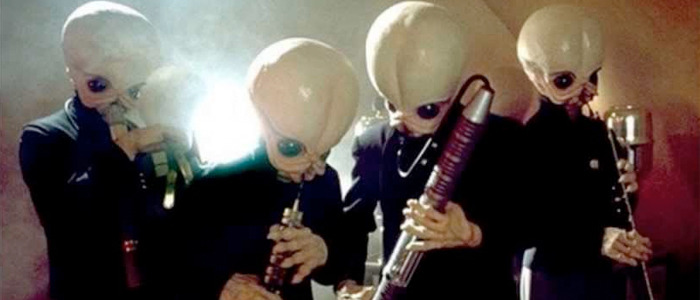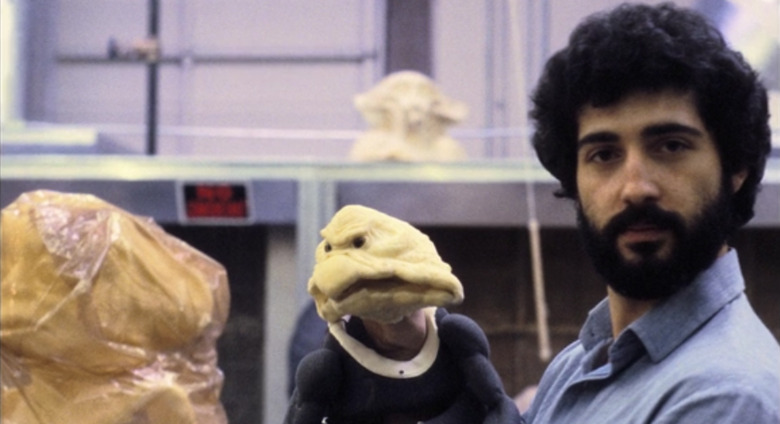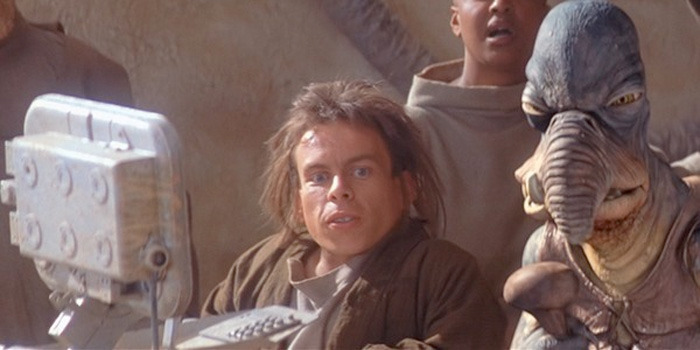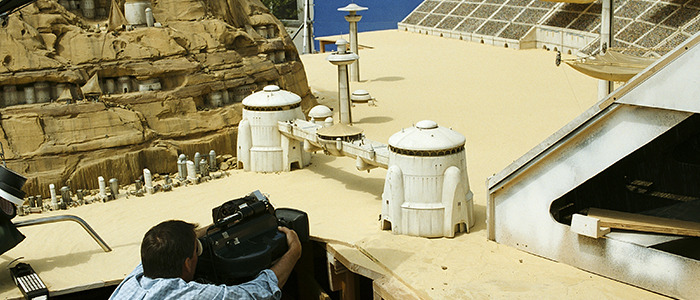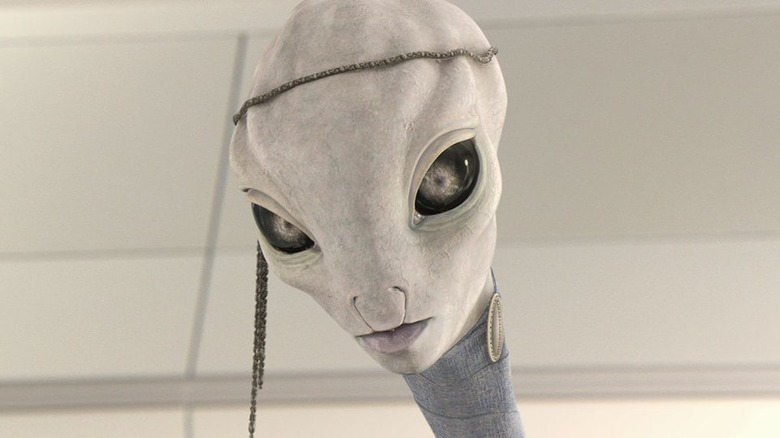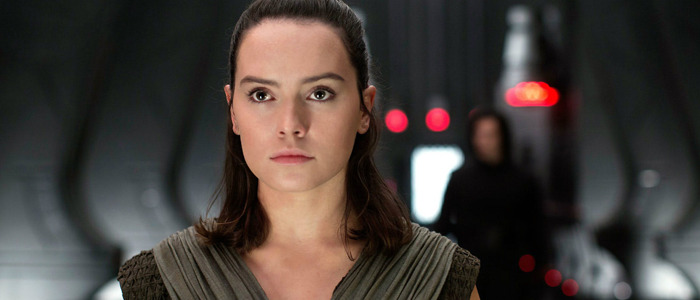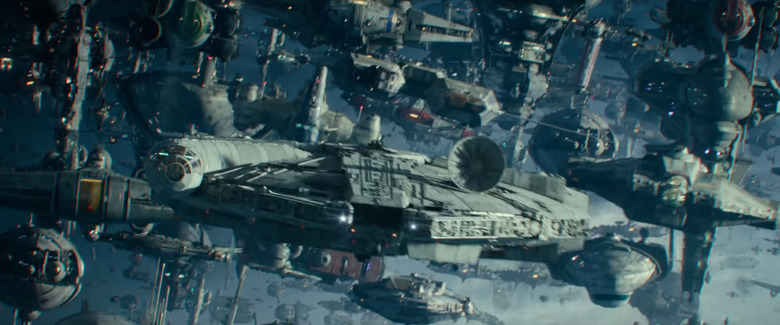20 Interesting Tidbits From 'Star Wars: Fascinating Facts,' The Latest Must-Own 'Star Wars' Book
Written by Pablo Hidalgo, Senior Creative Executive of Franchise Story & Content at Lucasfilm, Star Wars: Fascinating Facts - Story, Lore & History From the Greatest Galaxy is a compendium of hundreds of little-known facts about the Star Wars saga. From behind-the-scenes on-set tidbits to in-universe lore, this guide from Portable Press has tons of interesting info, including character profiles and firsthand accounts from cast and crew members.
Whether you are a diehard Star Wars fan or a casual reader curious to learn more about the series, Star Wars: Fascinating Facts is an invaluable guide to some of the lesser-known facts about that galaxy far, far away. Below is a sampling of some of the guide's most interesting tidbits, including new information on the Sequel Trilogy.
A Star Wars is Born
On August 3, 1971, United Artists registered the title "The Star Wars" with the Motion Picture Association of America, as part of a two-picture deal it signed with George Lucas. The first film, American Graffiti (released in 1973), was Lucas's first smash hit. And then:
The second picture was just hazily defined as a "space fantasy adventure in the vein of Flash Gordon," which the studio eventually passed on. Their loss would prove to be 20th Century Fox's eventual win.
At the Starting Line
The earliest incarnation of Star Wars wasn't set "a long time ago, in a galaxy far, far away." George Lucas's May 1973 story treatment is set in "the 33rd century, a period of civil wars in the galaxy." It continues:
The now-familiar establishing text was absent from the cut of the film that Marvel Comics writer Roy Thomas saw, so the very first issue of the Star Wars comics adaptation says, "This story has no relationship to Earth time and space. It occurs in other solar systems in another galaxy and could be happening in the future, the past, or even the present."
Cantina Creatures
The Mos Eisley Cantina sequence was originally shot as Elstree Studios in April of 1976, with a gaggle of creatures delivered by Stuart Freeborn's creature shop. The assortment of aliens failed to live up to George Lucas's active imagination, so a mere four months before the movie's release, he scheduled an additional stint of photography in Los Angeles to fill in booths and cutaways to even more outlandish aliens, created by Industrial Light & Magic and creature maestro Rick Baker. The end sequence is a seamless, skillful blending of both U.K. and U.S. photography through editorial tricks.
The One and Only Lando Calrissian
Leigh Brackett's first draft of The Empire Strikes Back screenplay has an unusual backstory for the smooth-talking schemer, Lando Calrissian:
"I'm a clone. Of the Ashardi family," he says. "My great-grandfather wanted many sons and he produced them from the cells of his own body. His sister, a remarkable woman, produced many daughters by the same means. Thus we keep the blood pure." This fact did not appear in any subsequent drafts, and the thread was completely abandoned, thus keeping Lando forever one-of-a-kind.
Affordable Bounty Hunters
For The Empire Strikes Back, Costume designer John Mollo had to create the bounty hunters that accompany Boba Fett on the Star Destroyer bridge for a modest budget — around $1,000 each. As a result, the "posse of predators" is the byproduct of thrifty recycling:
Bossk is a repainted reptilian mask from the cantina worn on a Windak pressure suit worn by a different cantina denizen. Dengar is wearing mostly remained stormtrooper and snowtrooper armor. Zuckuss has a newly sculpted head with bubble wrap for eyes. 4-LOM is a new head atop a repainted C-3PO body. Although IG-88 is more prop than costume, he's really a stack of spare parts. His head is part of a Rolls-Royce Derwent jet engine, previously seen behind the bar at the cantina.
Crumb Steals the Show
Salacious B. Crumb, the cackling Kowakian monkey-lizard that sits by Jabba's tail, was a character whose role kept growing as puppeteer Tim rose brought more and more life to the part:
Originally scripted only for one scene wherein two aliens aboard the sail barge have an argument, Salacious sits on one of their shoulders goading them on, Crumb's role expanded to be Jabba's pet and jester. Crumb even unofficially "co-hosted" several made-for-television behind-the-scenes documentaries that accompanied the film, such as From Star Wars to Jedi and Classic Creatures. Crumb was sculpted by Tony McVey, who returned to the design to create more monkey-lizards for The Mandalorian TV series.
Endor Wildlife
A closer look at the Ewok village sequences in Return of the Jedi reveals some familiar terrestrial creatures living among the trees:
A flock of twelve chickens (at least, that's the number according to the call sheets) were on set in the village square and can be seen in some establishing shots. Look to Chief Chirpa and you'll see an iguana crawling on him as he deliberated the fates of the heroes. According to the novelization of Jedi, the iguana is Chripa's "pet and advisor."
The Secret Ewokese Ingredient
To create convincing-sounding Star Wars languages, sound designer Ben Burtt would turn to unique languages from our planet as a starting point:
The Jawa language with Swahili, for example; Huttese finds its roots in Quechuan, an indigenous Peruvian language. For Ewokese, Burtt was drawn to the cadence and words of Kalmyk Oirat, a Mongolian language. He found an 80-year-old speaker willing to speak at length on tape, provided she had her preferred beverage on hand. This penchant caused her to be nicknamed "Grandma Vodka."
Warwick's War Stories
Since Warwick Davis's first acting role as Wicket W. Warrick in Return of the Jedi, he has played several roles in Lucasfilm productions, including the title role of Willow (1988) and the supporting roles of Wald and Weazel in The Phantom Menance. He was quick to notice that all his Star Wars roles started with the letter "W," and it's a connection that has continued since then. In The Force Awakens, he plays Wollivan. In The Last Jedi, Wodibin. In Rogue One, he was Weeteef Cyu-Bee, and in Solo he was once again Weazel as well as WG-22, Wamoth, and Wazellman. For Rise of Skywalker, his roles include Wizzich Mozzer and Wolentic Dudge.
The Dark Times
With no intention to make more movies, Lucasfilm began drawing its attention away from Star Wars in the mid-1980s, with several long-running franchise initiatives drawing to a close. The newspaper strip of five years ended in March of 1984. The Marvel Comics series finished after 107 issues in May of 1986. The Star Wars Fan Club folded in 1987. The Kenner toyline attempted to stretch its series out with Ewoks and Droids figures, but these, too, fizzled out. As hard as it is to imagine in modern times, Star Wars was essentially dead during a period long-time fans have dubbed "the Dark Times."
Pre-Shooting the Prequels
With The Phantom Menace, George Lucas relied on animatics, a sort of low-resolution placeholder version of the computer animation to previsualize scenes as the movie was being conceived. This is common today, but revolutionary at the time:
These were vital, as upwards of 70 percent of the film would require visual effects work, and decisions needed to be made early to focus that work as effectively as possible. Co-editor Ben Burtt and animatic supervisor David Dozoretz essentially "pre-shot" the movie, which crude temporary CG graphics and footage of crewmembers standing in as characters. This version of Episode I was then replaced bit by bit in editorial as finished shots came in.
Record-Breaking Model Work
Often praised for its breakthroughs in computer-generated visual effects, The Phantom Menace also boasts some of the most elaborate and complex modelmaking and miniature photography work in Industrial Light & Magic's history:
"More models were built for Episode I than in the entirety of the original trilogy of Episodes IV, V, and VI," said Steve Gawley, ILM model shop supervisor for Episode I. "In total, we build 500-plus models, miniature sets, and characters for this show. We employed as many as eighty-seven modelmakers at a time, with an average of sixty for a full year. It was huge."
Jar Jar's Placeholder Title
As a seemingly wry acknowledgment to the pointedly divisive opinions garnered by the floppy-eared Gungan sidekick of The Phantom Menace, George Lucas began writing the screenplay for Episode II with the placeholder name Jar Jar's Great Adventure. Even the animatic version of the famous opening crawl had this title underneath the "Episode" number.
Where the Grays Come From
You may have noticed that the Kaminoans — the cloners from Attack of the Clones — resemble the iconic Grey Aliens of UFO conspiracy culture. Well, that's no accident:
George Lucas specifically requested the look as a nod to that mythology and an homage to his pal Steven Spielberg's Close Encounters of the Third Kind. He envisioned them hailing from an oceanic world, as the ocean is the cradle of all life. "They are recreating life there," he said, "and Kaminoans are creatures that began life in the sea."
Guest Director in Animatics
Speaking of Spielberg, when the filmmaker expressed interest in the burgeoning field of animatics, George Lucas invited him to try his hand at previsualizing several segments of Revenge of the Sith:
Spielberg and the Episode III animatics crew created low-rez versions of the Utapau chase, the Emperor/Yoda duel, and the Mustafar duel, which were audacious, action-packed, and far too big and elaborate to fit in the movie. Pieces of Spielberg's sequences were released on the Star Wars Blu-ray set.
A.K.A. Rey
The Force Awakens' journey from script to screen was one of constant evolution, but one idea that remained constant from the start was that of a young woman's quest to become a Jedi Knight:
In George Lucas's original outline, she was a 14-year-old girl named Taryn. In his subsequent iterations, she would briefly be named Thea and — believe it or not —Winkie. When writer/director J.J. Abrams came aboard, he simpled the names to placeholders. Kylo Ren was the Jedi Killer. Thea became Sally. Finn was called Harry. And the character that would be Poe was John Doe. As the film neared production, Sally became Kira (which stuck as a production code name), then Echo, and finally Rey.
Luke Skywalker's Destiny
Although Luke Skywalker barely appears in The Force Awakens, the concept artists had a lot to imagine based on the story's fragments they heard as it developed:
Rey was on a mission to seek out Luke Skywalker, who had disappeared. As described by George Lucas, Rey is like Willard going up river seeking out Colonel Kurtz, an allusion to Apocalypse Now. The story had Rey find Luke on a Jedi temple planet, but he is a recluse, withdrawn into a very dark space and needs to be drawn back from despair.
Even more interesting is that it wasn't solely The Last Jedi writer-director Rian Johnson's idea to kill the legendary Jedi Master:
Years before The Last Jedi began development, the treatment left behind by George Lucas in 2012 also had Episode VIII be the one wherein Luke Skywalker would die.
The Sunken Death Star
The idea of exploring the sunken wreckage of the Death Star II and the Emperor's throne room dates back to art explorations done for The Force Awakens:
Although such a notion was cut early from the story exploration of Episode VII, the visual had an impact on director J.J. Abrams and he returned their inclusion in The Rise of Skywalker. The ruins are on Kef Bir, a moon in the Endor system. The exterior lightsaber duel between Kylo and Rey was shot on chilly days in November and December at the paddock tank at Pinewood Studios.
The Galaxy to the Rescue
The enormous space battle that ends The Rise of Skywalker required every available era-appropriate craft ILM could muster to fill the dark skies over Exegol:
This included pulling from non-film sources – starships that had previously flown in the various Lucasfilm animated series. From The Clone Wars came Mandalorian gauntlet fighters, T-6 shuttles, Zygerrian freighters, and Lantillian haulers. From Star Wars Rebels come the Ghost, Wookiee gunships, Lancer pursuit ships, and a YT-2400 Freighter. From Star Wars Resistance come Jarek Yeager, Torra Doza, and Kazudo Xiono in their racers. And zipping in from Star Tours is the Starspeeder 1000! In total, the reinforcements numbered 14,448 ships.
In Pursuit of Trivia
While it isn't the new gospel that The Star Wars Book is, Star Wars: Fascinating Facts is an excellent counterpart to those big heavy hardcover reference books Hidalgo is known for. It's a browseable, pick-up and jump-in pocket guide with a few tidbits even I — an actual crazy person who consumes way too much Star Wars content — didn't know. And with the holidays upon us, it would make the perfect gift for the fan in your life.
***
Star Wars: Fascinating Facts – Story, Lore & History From the Greatest Galaxy is now available at Amazon, Barnes & Noble, and other booksellers.

